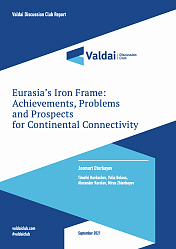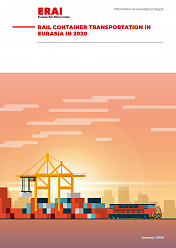Russia has sent consignments for India this Saturday from St Petersburg which will travel to India via the Caspian Port of Astrakhan and Iranian Port of Anzali and from there to Bandar Abbas Port and thereafter to Western Indian ports to operationalise INSTC, reports Economic Times.
«The consignments are two 40-feet containers of wood laminates weighing a total of 41 tonnes. The containers were loaded at St Petersburg and are heading toward Astrakhan where they will be loaded again at Solyanka Port. They will then tverse the Caspian Sea to reach Iran’s Anzali Port where they are scheduled to be transported to Bandar Abbas port city in southern Iran via trucks. The two containers will then be dispatched to India’s largest container port,» Dariush Jamali, director of a joint-owned Iranian-Russian terminal in Astrakhan, told Iranian news agency IRNA on Sunday.
The total journey will take less than 25 days, compared to the nearly 40 days it currently takes to transport goods from Russia to India and vice-versa. Besides reducing time taken for trade between India and Russia, INSTC is considered a viable option for Indo-Russian trade amid current geo-political challenges. INSTC, in the longer run, would be an alternative to the Suez Canal and Mediterranean dominated by some powers and Bosporus, according to sources who did not wish to be identified.
Connectivity via Chabahar Port and INSTC topped the agenda of the Iranian foreign minister’s visit to India last week. There has been a plan to link INSTC with Chabahar Port which India has assisted to expand and is being used for connectivity with Afghanistan and Central Asia.
The INSTC is a 7,200 km-long multimodal transportation network encompassing sea, road, and rail routes. It links the Indian Ocean to the Caspian Sea via the Persian Gulf onwards into Russia and Northern Europe and offers the shortest connectivity route between them. Multimodal routes through sea, rail, and road under the INSTC aim to reduce the carriage cost between India and Russia by about 30% and bring down the transit time from 40 days by more than half.
The foundation of the North-South transport corridor was laid on September 12, 2000, in accordance with an intergovernmental agreement signed between Russia, Iran, and India. Azerbaijan joined this agreement in 2005. This agreement was ratified by 13 countries (Azerbaijan, Belarus, Bulgaria, Armenia, India, Iran, Kazakhstan, Kyrgyzstan, Oman, Russia, Tajikistan, Turkey, Ukraine). The project has a number of components —— Northern and Western Europe —— the Russian Federation, Caucasus —— Persian Gulf (Western route); Central Asia —— Persian Gulf (Eastern Route); Caspian Sea —— Iran Persian Gulf (Central Route).





